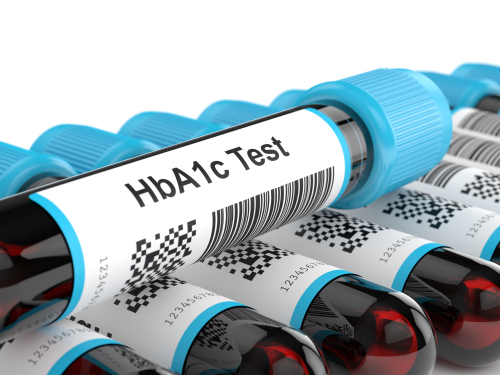What is a Lipid Profile?
Lipid Profile is basically the pattern formed by lipids in our blood, and using that the test determines the values of high density lipoprotein (HDL), low density lipoprotein (LDL), and triglycerides. The main purpose of this test is to diagnose diseases based on LDL or abnormal cholesterol count. LDL cholesterol is usually the bad cholesterol in our body and if left unchecked for a long time can be the root cause for many complications in the future. This panel of tests helps predict your risk for heart disease and stroke.
A lipid panel measures these fats:
- Total cholesterol
- LDL (“bad”) cholesterol
- HDL (“good”) cholesterol
- Triglycerides, another type of fat that causes hardening of the arteries
Normal ranges in the Lipid Profile
Test results may vary depending on your age, gender, health history, the method used for the test, and other things.
Results are given in milligrams per decilitre (mg/dL).
Ranges for total cholesterol in adults:
| Normal | Less than 200 mg/dL |
| Borderline high | 200 to 239 mg/dL |
| High | At or above 240 mg/dL |
Ranges for LDL cholesterol in adults:
| Optimal | Less than 100 mg/dL (This is the goal for people with diabetes or heart disease.) |
| Near optimal | 100 to 129 mg/dL |
| Borderline high | 130 to 159 mg/dL |
| High | 160 to 189 mg/dL |
| Very high | 190 mg/dL and higher |
Your HDL cholesterol levels should be above 40 mg/dL. This type of fat is actually good for you because it lowers your risk of heart disease. The higher the number, the lower your risk. Sixty mg/dL or above is considered the level to protect you against heart disease.
High levels of triglycerides are linked with a higher heart disease risk. Here are the adult ranges:
| Normal | Less than 150 mg/dL |
| Borderline high | 150 to 199 mg/dL |
| High | 200 to 499 mg/dL |
| Very high | Above 500 mg/dL |
What causes an abnormal Lipid Profile?
Low LDL count or levels is considered as a healthy and normal cholesterol. High LDL is considered and often called high cholesterol level and poses certain risks to a human body. There are a lot of factors responsible for causing high LDL levels, and some of them include obesity, heavy alcohol consumption, irregular diets, intake of saturated fat and unhealthy carbs, eating too much junk food, staying inactive and not working out, etc.
Causes related to your food intake
Two types of fat are known to increase cholesterol levels.
Saturated fat: Saturated fats can increase your LDL levels. Some plant-based foods, such as palm oil and coconut oil, contain saturated fats. However, saturated fat is mostly found in animal-based food products such as:
- cheese
- milk
- butter
- steak
Trans fats: Trans fats, or trans-fatty acids, are worse than saturated fats because they can raise your LDL levels and lower your HDL levels. Some trans fats are found naturally in animal products. Others are found in processed foods that have undergone a process called hydrogenation, such as some kinds of margarine and potato chips.
Medical causes
Certain medical conditions can affect your cholesterol levels. High blood cholesterol levels can be caused by:
- Diabetes
- Hypothyroidism
- Metabolic syndrome
- Cushing’s syndrome
- Polycystic ovary syndrome (PCOS)
- Kidney disease
- Other causes
Other causes of high cholesterol levels
- Lack of exercise. Not getting enough exercise can increase your LDL levels. Not only that, exercise has been shown to boost your healthy HDL levels.
- Smoking. Smoking can also increase your bad cholesterol, causing plaque to build up in your arteries.
- Genetics. If high cholesterol runs in your family, you’re at increased risk of having high cholesterol yourself.
- Medications. Certain medications, such as some kinds of diuretics, can increase your cholesterol levels.
Health risks associated with abnormal lipid panel range
The extra LDL that our blood doesn’t carry gets collected on the walls of our blood vessels which can cause obstructions in the flow of the blood. Atherosclerosis (buildup of fats, cholesterol and other substances in and on your artery walls), chances of heart attack, stroke and hardening of our blood vessels are the possible complications that a severely high LDL count can cause to a human body. Patients suffering from diabetes often have a high LDL count.
On the other hand, very high levels of triglycerides (higher than 500 milligrams per decilitre of blood, or mg/dL (5.65 mmol/L) can increase the risk of pancreatitis (inflammation of the pancreas).
Ways to ensure my lipid panel is in normal range
Practicing healthy lifestyle habits and following a proper diet is more than enough to keep our LDL levels in check. We can maintain our LDL count by staying active, avoiding alcohol consumption, saying no to junk food, avoiding edibles that have saturated fat, eating a balanced diet rich in nutrients essential for our body and medications in case of severely high LDL count. The American Heart Association (AHA) recommends that no more than 6 percent of your daily calories come from saturated fat. The AHA also recommends avoiding trans fats whenever possible. Eating plenty of whole grains, fruits, and vegetables can also decrease high cholesterol.
Other ways that can help you maintain healthy cholesterol and triglyceride levels include:
- Eating skinless poultry with no visible fat
- Eating lean meats, in moderate portions
- Eating low-fat or fat-free dairy products
- Consuming polyunsaturated fats and mono-unsaturated fat instead of saturated fats and trans fats
- Exercising for at least 30 minutes per day, 4 days per week
- Avoiding fast food, junk food, and processed meats
- Eating grilled and roasted foods instead of fried foods
- Drinking less alcohol, alcohol causes triglyceride levels to increase







